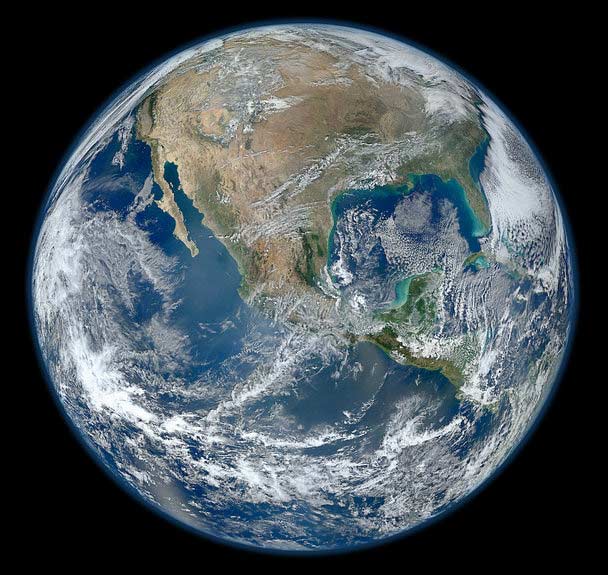Create a free profile to get unlimited access to exclusive videos, sweepstakes, and more!
Mosaic of home

Just before Halloween last year, NASA launched into orbit the improbably named National Polar-orbiting Operational Environmental Satellite System Preparatory Project, which they thankfully shortened to NPP. In its low 800 km (500 mile) orbit it looks down at the Earth to investigate our environment. It only sees a portion of the Earth at any one time, but if you take observations taken during a single day -- say, on January 4, 2012 -- and stitch them all together, you get this magnificent shot:
[Click to engaiaenate, or download the Big McLarge Huge 8000 x 8000 pixel version.]
Man, the resolution is so high is like you're actually there.
Oh wait.
In fact, the biggest version is 8000 pixels across, and the Earth is about 8000 miles wide, so the resolution is about a mile per pixel. We're not seeing the entire hemisphere here, but the view is roughly 8000 km across (judging from the size of the US compared to the view). The big image is 8000 pixels wide, so the resolution of that mosaic is about 1 km/pixel. The Earth is big.NPP was recently renamed Suomi NPP in honor of Verner Suomi, a pioneer in using satellites in meteorology. I like that we tend to name satellites and space probes after people whose work made those very missions possible, or for people we honor and respect (my favorite is still Sojourner, the Mars rover named after Sojourner Truth... with the bonus of the name being a pun).
Apropos of nothing, I'll note the images making up this seamless mosaic were taken around the same time the Earth was at perihelion, when it was closest to the Sun in its orbit. There is nothing particularly important about that fact, but still... when I see pictures like this I think about how amazing our planet is, and how wonderfully well-adapted we are to it. Evolution is a stochastic process, a semi-random series of bumps and false starts that literally made us who were are today. But that doesn't change the feeling of comfort I get when I see a picture of Earth, floating in space, sitting in the brightest and warmest sunlight of the year.
It's home, and I'm glad we're taking such a close look at it.
Related posts:
- New satellite gets INSANELY hi-res view of Earth
- Rosetta takes some home pictures
- Earth from Rosetta
- What does a lunar eclipse look like from the Moon?



























